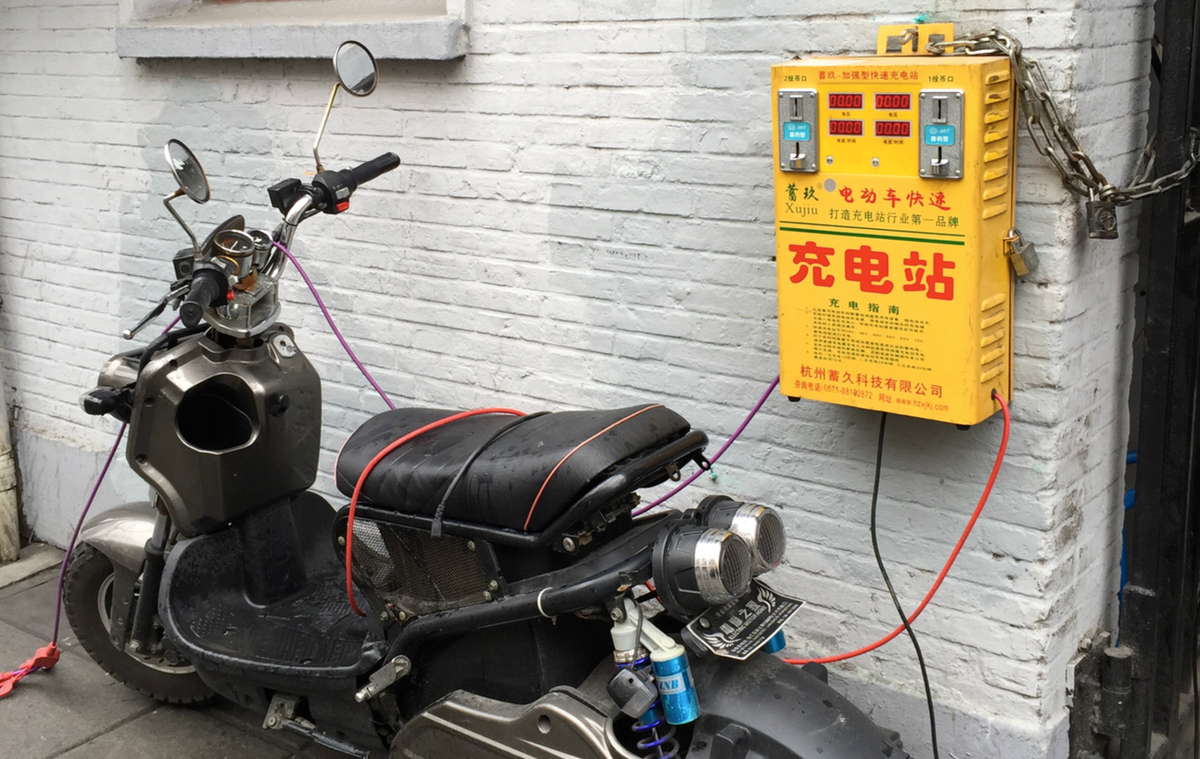The future always starts in crappy mode

When I started to travel and regularly work in Shanghai back then, many things were surprising in how technology was developed and incorporated into everyday life. Many things that would later make China a tech super-power were junky at best. But they were there, burgeoning from duct tape, exposed wires, and bad mobile interfaces.
One of the ah-ah moments I had at the time was bumping into crappy recharge stations at every street's corner. These stations were not powering Teslas or local electric cars but also primarily crappy e-motor scooters. The stations were haphazardly chained to residence walls and were operated by... coins.
I never knew how many fires or electric shocks this system was responsible for. At the time, I knew that a core mobility and urbanism problem was treated with these omnipresent contraptions. It was a story of purchasing power, pollution, population density, and convenience. I also knew that given the already impressive spread of this crap, the problem was deep, widespread, and critical. It was bound to be solved by further rapid iterations of the system in China. It was also the same problem many of the largest urban centers in the West were having.
This crappy mode was mapping the future of China's mobility and, with some lag, the future of the West too. The story could be a book about the many tribulations China underwent with urban mobility, how Western automakers disregarded this market until Tesla squeezed in from the top, and how we are still slightly clueless in Europe and the U.S.
I vividly remember a meeting in 2013 with a few directors of the largest automaker in France, discussing the possibility of EVs for China. I was excited and told them something along the lines of "That would be an exciting move, while the market is already saturated, the current offer is dreadful and in dire need of elegant and efficient design!" They looked at me with blank eyes. Saturated? They told me they were only very few electric vehicles in China. I replied, very puzzled that there were about 24 million units in Shanghai.
Then I realized...
They were talking cars, not vehicles.
When the future appears in this initial crappy mode, it sure doesn't set sexy expectations for your executive committee. But it mostly starts in this mode. The fairest benchmark of your innovation capabilities cannot be further from the number of patents you hold. It's about how many of your teams and initiatives can explore these futures, make sense of their directionality, and reinterpret them in a cleaner, more elegant, and scalable mode.



